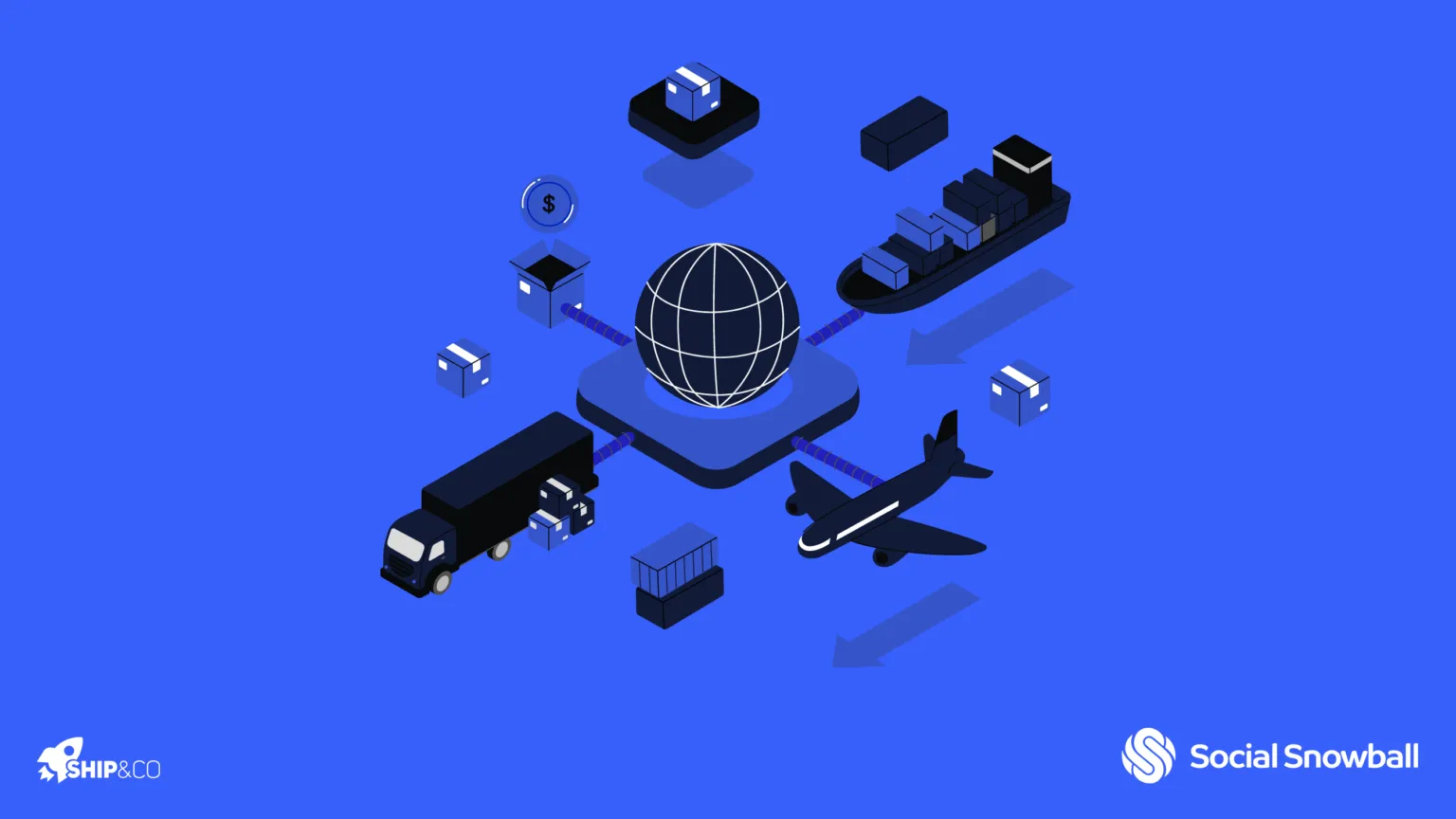Spending money on ads and not getting results? Many brands face this issue when relying on traditional advertising models like PPC (Pay Per Click) or CPM (Cost Per Impression), where you pay even if no sale happens.
CPA marketing (Cost Per Action) solves this by shifting the focus to actual conversions. You only pay when a user takes a defined action, like purchasing or signing up. This makes it a go-to strategy in performance marketing, helping businesses control acquisition costs while driving quality customer referrals.
Whether you’re a beginner or looking to optimize your CPA for your marketing, this guide will help you understand CPA in marketing and how affiliate marketing is one of the best ways to reduce your CPA and maximize ROI.
What is a CPA in marketing?
Cost-per-action marketing (also known as cost-per-acquisition marketing) is a performance metric that measures how much you spend to get a user to take a specific action, whether that’s making a purchase, signing up for a trial, or filling out a form. It’s calculated as:

CPA is widely used in affiliate marketing, paid ads, and other performance-based campaigns because it directly ties costs to results. Unlike CPM (Cost Per Mille) or CPC (Cost Per Click), where you pay for impressions or clicks, CPA marketing campaigns make sure that you only pay for actual conversions.
Similarly, CPA affiliate marketing determines how much you pay affiliates per conversion. Some programs offer flat-rate pricing, while others pay a percentage of the sale. While CPA-based models help control costs, they also require fraud prevention measures, as some affiliates may try to game the system with fake conversions.
Types of CPA in affiliate marketing

Businesses use different CPA models based on their goals, including:
- Cost-per-lead (CPL): Payment for each verified lead, such as a form submission or email subscription.
- Cost-per-click (CPC): Payment for each click on an affiliate link, regardless of conversion.
- Cost-per-sale (CPS): Payment only when an affiliate-driven sale is completed.
- Cost-per-install (CPI): Common in software and mobile apps, paying for each download and installation.
- Cost-per-view (CPV): Payment based on the number of views an ad or video receives.
Advantages and disadvantages of CPA in marketing
CPA can be an effective way to measure and optimize the performance of affiliate campaigns. However, it also has its limitations that brands must be aware of. Let’s discuss these in detail.
Advantages of CPA in marketing
Some benefits of CPA marketing are:
- Precise measurement: CPA allows businesses to measure the exact cost of acquiring a customer or lead, providing an accurate picture of the effectiveness of their online marketing campaigns.
- Efficient use of resources: Since you pay only for successful conversions, you can allocate your budget more efficiently and avoid wasting money on ineffective campaigns.
- Predictable costs: With CPA, you know exactly how much you need to pay for each acquisition, which makes budgeting and forecasting more accurate and predictable.
- Incentivizes performance: It incentivizes influencers and other affiliate partners to perform well and optimize their campaigns to drive more conversions.
Disadvantages of CPA in marketing
In contrast, some cons associated with using CPA in marketing are:
- Higher costs: CPA offers can be more expensive than CPC or CPM, depending on industry benchmarks, affiliate performance, and AOV. For example, if affiliates drive low AOV sales or fail to convert, CPA costs can rise. This is why it’s essential to work with top-performing partners and optimize commissions.
- Limited control: Since you rely on affiliates, influencers, or other partners to drive conversions, you have limited control over the quality of the traffic and the customer experience.
- Time-consuming: Finding and vetting affiliates or partners, monitoring campaigns, and optimizing your performance can take time.
- Limited reach: CPA campaigns only reach the audiences that follow your affiliate partners, making it likely to limit your reach if you don’t have multiple affiliates in place.
How does a CPA in affiliate marketing work?
CPA affiliate programs use a performance-based model where businesses pay affiliates only when a specific action—such as a sale—occurs. This makes it a low-risk and high-reward strategy.
Here’s a step-by-step on how CPA affiliate marketing works:
1. Define the goal and set payment terms
Before launching a CPA campaign, decide what action to pay for. Common actions that brands pick are:
- Product purchases: Paying affiliates when a sale is made.
- Lead generation: Compensating affiliates for signups, registrations, or newsletter subscriptions.
Once you have set the goal, create an agreement that includes:
- The exact action required for payment
- The commission structure (fixed fee or percentage)
- Guidelines for affiliate promotions
If you’re using a CPA affiliate network (like ShareASale, CJ Affiliate, MaxBounty, or Shopify Collabs), you can either follow their terms or customize an agreement for your business.
2. Recruit affiliates
Finding the right affiliates is critical. You can recruit them through:
Affiliate networks
Platforms such as ClickBank, CJ Affiliate, and ShareASale connect businesses with affiliate marketers. Some CPA networks vet affiliates, while others allow open enrollment. Reviewing their audience, content quality, and promotional methods helps prevent low-quality traffic.
A common issue with affiliate networks is that many ecommerce brands don’t have the resources to subscribe to these networks or partner with the kind of large affiliates they host.
Direct outreach to potential affiliates
Manually find niche influencers, content creators, and bloggers with engaged audiences on social platforms, send them DMs or emails and inform them about your program. This is a better option since it’s more cost-effective and allows you to find affiliates that align most with your brand.
3. Generate and distribute affiliate links
Each affiliate receives a unique, trackable link that directs users to a product page, landing page, or sign-up form. These links are promoted through:
- Social media
- Blog posts
- Email marketing campaigns
Tracking tools monitor conversions and attribute them to the correct affiliate. This prevents fraud and provides accurate performance data.
To prevent fraud and guarantee accurate tracking, use tools like Safelinks that provide secure, tamper-proof links.
4. Monitor performance and pay affiliates
Once affiliates start to drive traffic, use the analytics within your digital marketing tool to evaluate metrics such as:
- Conversion rate: The percentage of visitors who complete the required action.
- Cost per acquisition: The total cost of acquiring a customer through affiliates.
- Traffic quality: Assess whether affiliate partnerships bring genuine, engaged users.
Affiliates are paid according to the CPA agreement, either as a one-time payout or through recurring commissions for subscription-based conversions.
How affiliate marketing drives low CPA for ecommerce brands
Affiliate marketing is one of the most cost-effective strategies for ecommerce brands looking to acquire customers at a lower CPA. Here are some reasons why:
- Pay only for conversions: Unlike traditional advertising models that charge for clicks, an affiliate marketing program guarantees you pay only when a sale or lead is generated. This eliminates wasted ad spend and guarantees that every dollar contributes to actual results.
- Lower customer acquisition costs: With affiliates promoting your products through their own channels—such as blogs, social media, or email lists—you avoid high bidding costs on paid efforts like Meta or Google ads. This means lower upfront investment while still reaching highly engaged audiences.
- Access to a highly qualified audience: Affiliates have established trust with their followers, making it easier to convert traffic into paying customers. This warm audience requires less persuasion, shortening the sales cycle and improving conversion rates.
- Performance-based scaling: You can scale without upfront ad budgets. Since affiliates earn commissions only after driving successful actions, brands can expand their reach without financial risk. This makes affiliate marketing a sustainable long-term strategy for lowering CPA.
- Higher lifetime value (LTV): Customers acquired through trusted affiliates tend to be more loyal, leading to repeat purchases and a higher lifetime value. This further offsets acquisition costs and improves overall profitability.
Best practices to improve CPA for your affiliate marketing
Affiliate marketing already offers a cost-effective way to acquire customers, but optimizing your strategy makes sure you're getting the best return on investment. Here are 5 ways to improve your CPA for your affiliate program:
Find relevant affiliates
Working with the right affiliates is the base of a cost-effective CPA strategy. Instead of casting a wide net, focus on:
- Social media influencers: Choose creators whose audience aligns with your brand and who have experience making money online through affiliate marketing. This guarantees that you drive high-quality traffic.
- Existing customers: A loyalty-based referral program can convert happy customers into promoters.
Pro-tip: Affiliate networks are expensive so it’s recommended to opt for these platforms only if you have a large budget for your affiliate marketing efforts.
Maintain a competitive but affordable commission rate
Your commission structure should be attractive enough to motivate affiliates without inflating acquisition costs. To strike the right balance:
- Benchmark against competitors to set commissions that are competitive yet sustainable.
- Introduce performance-based commissions, rewarding affiliates based on sales volume rather than flat rates.
- Offer tiered payouts, where commissions increase as affiliates generate more conversions, keeping costs proportionate to revenue.
Use the right platform to reduce manual costs
Managing affiliates manually can add unnecessary expenses and impact your CPA. Instead, the right tool can automate processes, control costs, and improve efficiency. Here’s how:
- Affiliate management tools (like Social Snowball) automate tracking, payments, and reporting, reducing administrative overhead.
- Automated reporting lets you track underperforming affiliates and reallocate resources more effectively.
- Smart link tracking guarantees accurate attribution, so commissions are only paid for legitimate conversions.
Define terms and attribution model
Unclear attribution can lead to overpaying for conversions that affiliates didn’t fully influence. To avoid this:
- Select the right attribution model (first-click, last-click, or multi-touch) based on how your customers typically convert.
- Set reasonable cookie durations (the length of time a cookie remains active on a user's browser after they click an affiliate link) to prevent paying commissions when other marketing efforts contributed to a sale.
- Clearly outline payout conditions to make sure affiliates meet specific performance criteria before earning commissions.
Set measures to avoid fraud and coupon misuse
Affiliate fraud and unauthorized coupon usage can inflate your CPA without delivering real value. To protect your program:
- Monitor for suspicious activity, such as abnormally high conversions from low-quality traffic sources.
- Blacklist fraudulent affiliates who exploit loopholes to manipulate commission payouts.
- Use Safelinks by Social Snowball to block coupon sites from auto-applying codes and claiming unearned commissions.
Ready to improve your CPA with the right affiliate marketing strategies?
We hope this piece helped you understand how you can leverage CPA marketing to acquire new customers while spending your budget only when you get conversions.
If you’re looking to set up your affiliate program or scale it, Social Snowball is the #1 tool that lets you manage the entire process—onboarding your affiliates, tracking sales, automating payouts, communicating with affiliates, fraud prevention, and analyzing how your strategy works.











